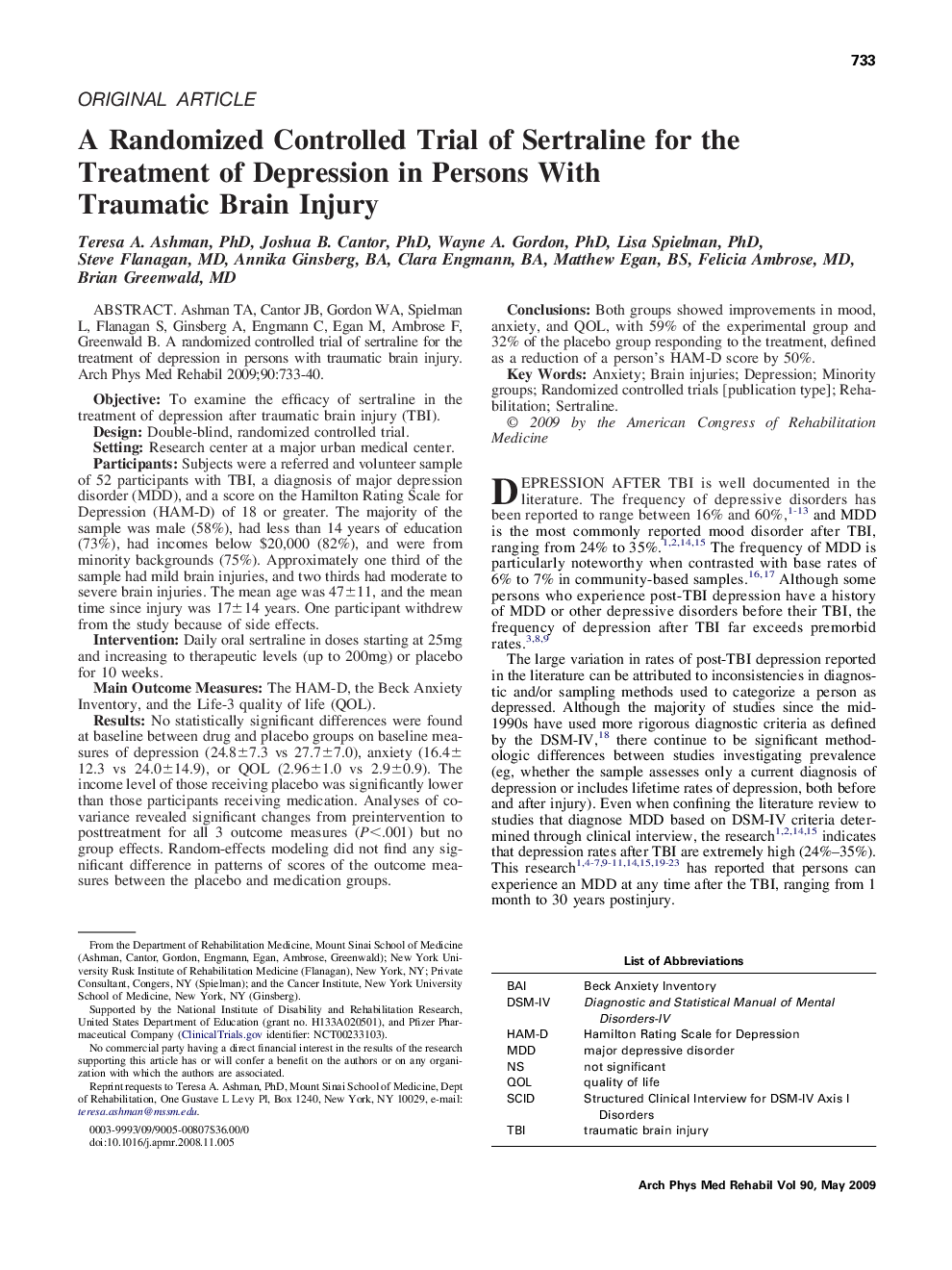| کد مقاله | کد نشریه | سال انتشار | مقاله انگلیسی | نسخه تمام متن |
|---|---|---|---|---|
| 3449483 | 1595766 | 2009 | 8 صفحه PDF | دانلود رایگان |

Ashman TA, Cantor JB, Gordon WA, Spielman L, Flanagan S, Ginsberg A, Engmann C, Egan M, Ambrose F, Greenwald B. A randomized controlled trial of sertraline for the treatment of depression in persons with traumatic brain injury.ObjectiveTo examine the efficacy of sertraline in the treatment of depression after traumatic brain injury (TBI).DesignDouble-blind, randomized controlled trial.SettingResearch center at a major urban medical center.ParticipantsSubjects were a referred and volunteer sample of 52 participants with TBI, a diagnosis of major depression disorder (MDD), and a score on the Hamilton Rating Scale for Depression (HAM-D) of 18 or greater. The majority of the sample was male (58%), had less than 14 years of education (73%), had incomes below $20,000 (82%), and were from minority backgrounds (75%). Approximately one third of the sample had mild brain injuries, and two thirds had moderate to severe brain injuries. The mean age was 47±11, and the mean time since injury was 17±14 years. One participant withdrew from the study because of side effects.InterventionDaily oral sertraline in doses starting at 25mg and increasing to therapeutic levels (up to 200mg) or placebo for 10 weeks.Main Outcome MeasuresThe HAM-D, the Beck Anxiety Inventory, and the Life-3 quality of life (QOL).ResultsNo statistically significant differences were found at baseline between drug and placebo groups on baseline measures of depression (24.8±7.3 vs 27.7±7.0), anxiety (16.4±12.3 vs 24.0±14.9), or QOL (2.96±1.0 vs 2.9±0.9). The income level of those receiving placebo was significantly lower than those participants receiving medication. Analyses of covariance revealed significant changes from preintervention to posttreatment for all 3 outcome measures (P<.001) but no group effects. Random-effects modeling did not find any significant difference in patterns of scores of the outcome measures between the placebo and medication groups.ConclusionsBoth groups showed improvements in mood, anxiety, and QOL, with 59% of the experimental group and 32% of the placebo group responding to the treatment, defined as a reduction of a person's HAM-D score by 50%.
Journal: Archives of Physical Medicine and Rehabilitation - Volume 90, Issue 5, May 2009, Pages 733–740